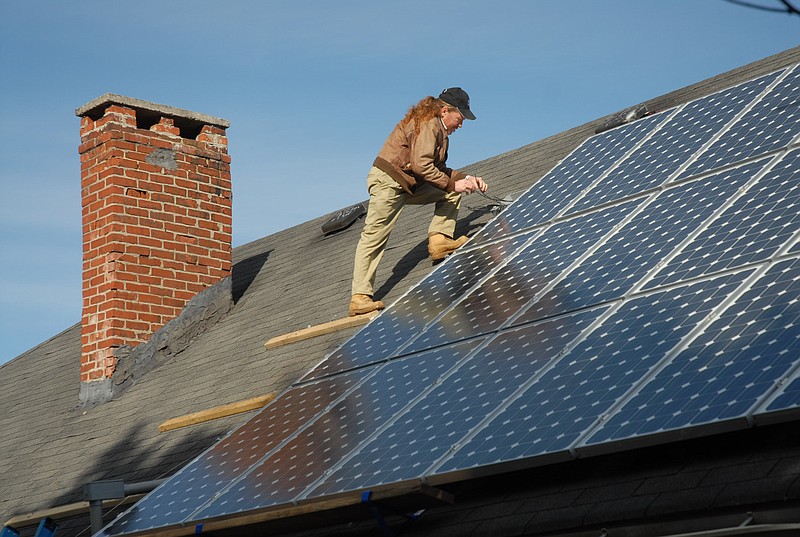Whether you're looking to reduce your carbon footprint or electricity bill, protect yourself against rising energy costs or generate a profit, solar energy is becoming more and more popular among today's homeowners. Since 2018, U.S. solar installations have grown 35-fold, according to energy.gov.
But while prices for solar panel systems are getting lower, decreasing 2% since last year, they are still expensive. Here are the main things to consider before making the significant investment required with residential solar installation:
* Your property's location and tree cover and the positioning of your home in relation to the sun. Depending on this, solar energy may not be an option for you. Zillow.com rates homes' solar potential with a "Sun Number."
* Tax credits. If you decide to install solar panels at your home, it pays to do so sooner rather than later. In 2019, you can get a 30% federal income tax credit on the cost of installation. Next year, that credit will drop to 22%.
* Other incentives. TVA's Green Power Providers program rewards homeowners who install a renewable-energy system sized up to 50 kilowatts by paying them for every kilowatt-hour of energy it produces. That program will be closed to new applicants starting in 2020. The state of Tennessee doesn't offer any solar energy incentives for homeowners, so the only other financial benefit for locals with residential solar installations is the savings they'll see on their energy bill, says Ray Kazlaskia, owner of Scenic City Solar. Savings average 50-75 %, he says.
* Pricing. Shop around for pricing on materials and installation, which can vary widely. The national average cost per watt is $3, but Kazlaskia's rate is about $2 per watt because he buys his materials in bulk, he says.
The average cost for a 6-kilowatt solar panel system - enough to power the average size home in the U.S. - is between $15,480 and $20,280, according to energysage.com.
Another option
If you’re just wanting to reduce carbon emissions for everyone’s benefit, another option is TVA’s Green Power Switch. For $4 a month, customers can purchase a 150 kWh block of renewable energy that is delivered into TVA’s power mix. The energy is a mix of alternative generation, mainly wind, from across TVA’s service territory. Two blocks would offset about 25% of the average home’s energy use, though customers do not receive any credits on their monthly bills.
Community Solar
Don't own a home or aren't ready to make a huge investment? You can still get in on the solar energy action.
A partnership between TVA and EPB, Solar Share is Chattanooga's first community solar project. It's sort of like joining a gym - you pay to use the equipment and have it maintained rather than purchasing all the equipment yourself. The community solar installation consists of 4,408 solar panels, about half of which are already leased. The farm's total output of nearly 1.4 megawatts per year is enough to supply the needs of 130 average size homes.
Here's how it works:
* If you're renting an apartment or aren't sure if you'll be moving soon, you can lease panels on a month-to-month basis starting at $5 a month per panel. There's also an option to purchase a 20-year license for an annual license fee per panel. That fee is $680 for the first year and decreases by $34 each subsequent year over the 20-year period, but also comes with a $10 per panel annual maintenance fee.
* Purchasers receive credits on their monthly home power bill for the energy produced by their chosen number of panels. Customers may only license enough panels to cover the average of their power usage over the last 12 months, or 100 panels, whichever is less. Each panel within the array is estimated to produce approximately 37 kWh per month.
The average home in the Tennessee Valley uses 14,400 kWh per year, which would require 33 panels to produce. Remember, though, that you'll get credits on your energy bill even if you don't offset your home's entire usage.
Fast fact
The average cost for a 6-kilowatt solar panel system — enough to power the average size home in the U.S. — is between $15,480 and $20,280, according to energysage.com.
* Energy-bill credits depend on total generation of the array for the month prior, but are calculated at the current residential electric rate. For example, if each panel generates 37 kWh and the current residential electric rate is 10.3¢ per kWh, you would receive a credit of $3.81 per panel. If the residential rate goes up, your credits will become more valuable, as they automatically adjust as the electric rate rises or falls.
* If you license community solar panels and decide to move, provided you give EPB adequate notice and move within the utility's service area, you can still get energy credits on your new home's monthly electric bill for the remainder of the 20-year licensing period. You also have the option to have EPB buy back your panels for the amount you would have paid for that year's licensing fee.
The Takeaway
Based on average installation costs and energy savings, it would take a local homeowner roughly 20 years to break even. But the main benefit is the knowledge that you're helping to produce renewable energy.
According to Project Sunroof, a Google application to determine solar energy potential, 79% of the roofs in Chattanooga are viable for solar power generation. That would reduce carbon emissions by 1.5 million metric tons, the equivalent of 308,000 cars each year or 37.3 million trees over 10 years.
